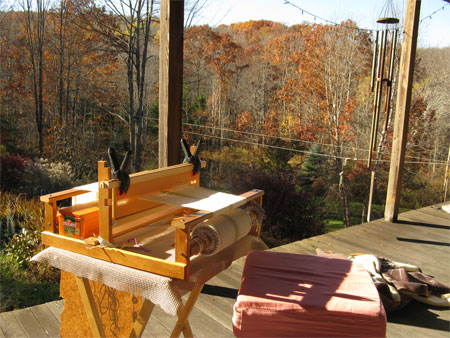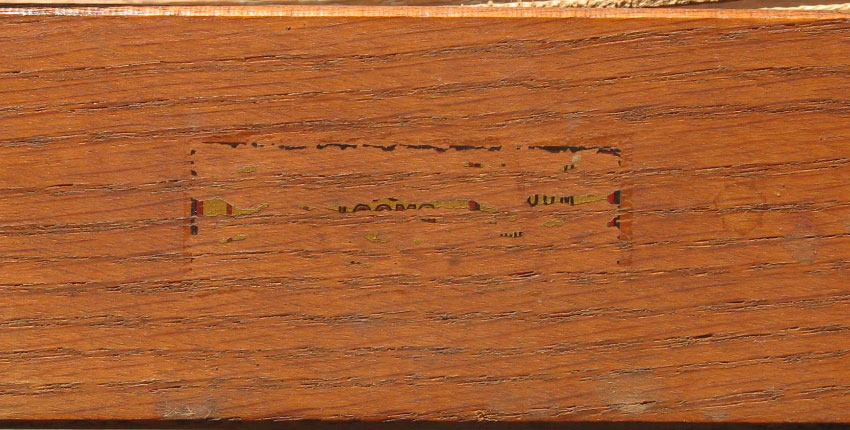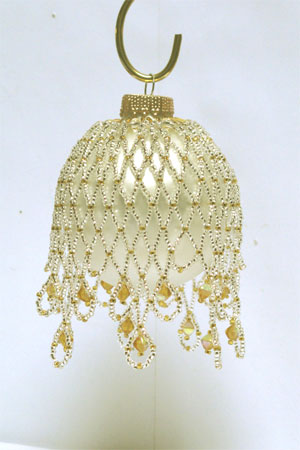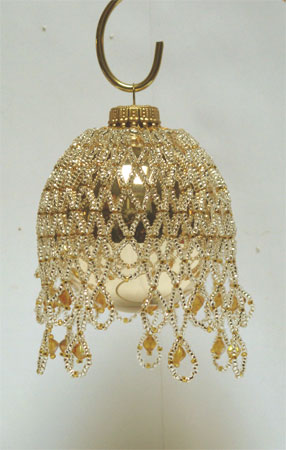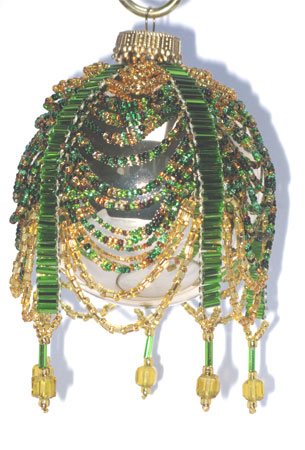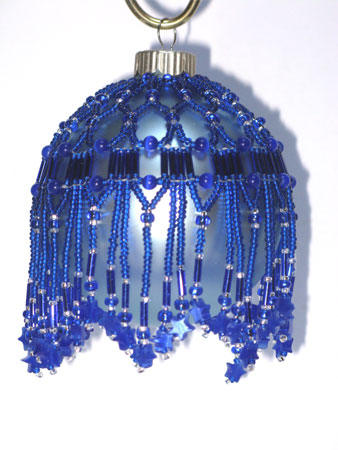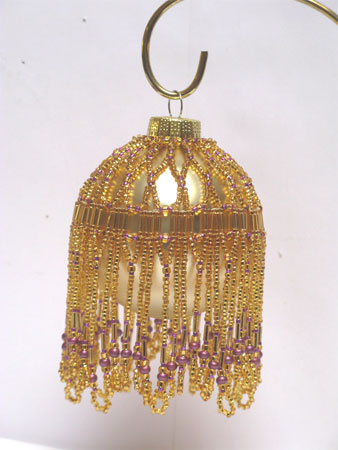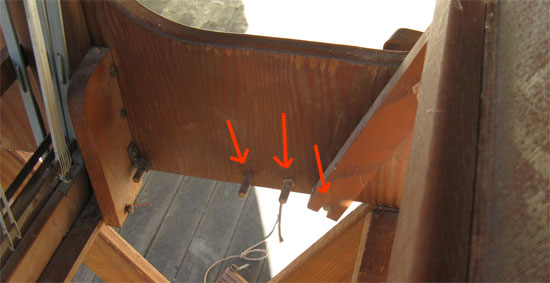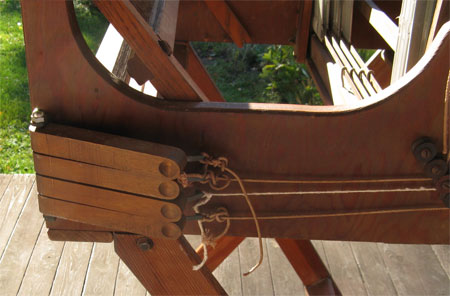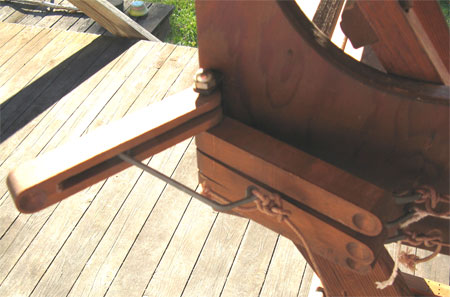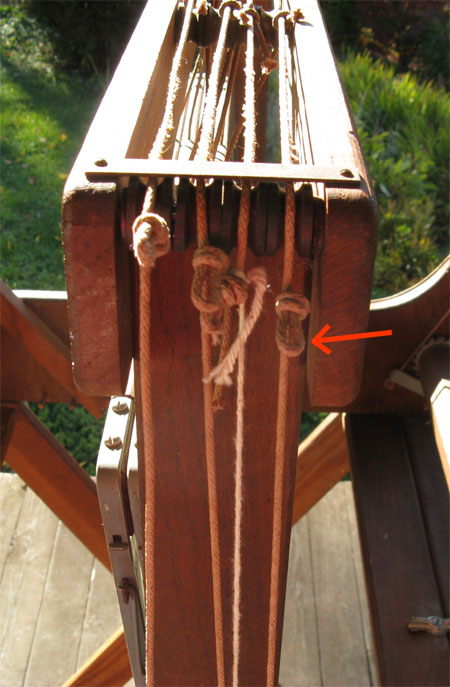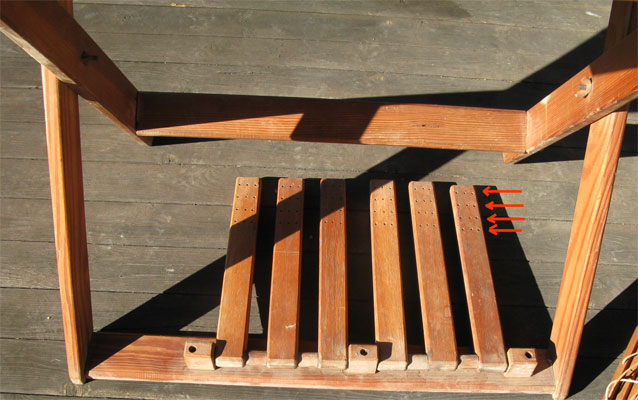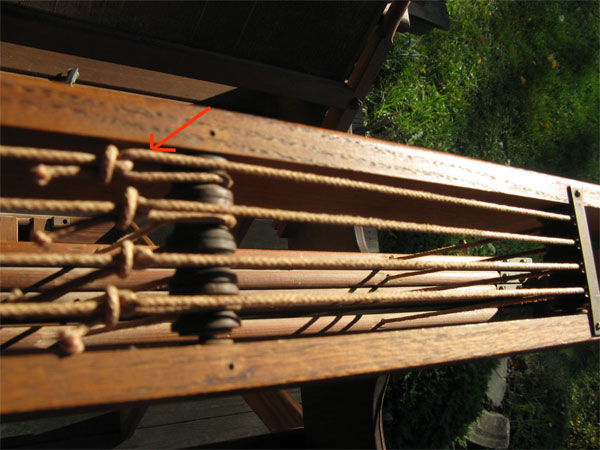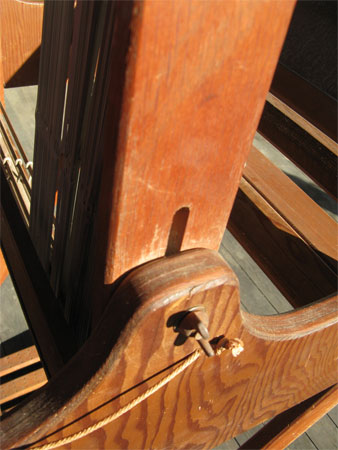The last two days here in Western New York have been so amazingly beautiful, so warm and lovely, that it’s hard to think about the Frankenstorm that’s coming. Too hard to stay inside the house, even when there’s tons to be done to be ready for my next show.
How to solve this dilemma?
Bring the little rigid heddle (RH) loom out onto the porch to finish off the warp I started at the show last weekend! Certainly one of the beauties of RH looms is their portability. No need to weave inside on days like this!
Before the show I had warped my little LeClerc RH with 160 threads of a lovely, undyed baby alpaca. I clamped two heddles together so I could sett at 20 ends per inch. I was THRILLED that this time when I went to thread two rigid heddles the entire process made complete sense to me. Last time I was baffled, frustrated, and confounded. I had two different written sources & some online help and it still took several hours — thread it, take it out, repeat. This time – no problem. Zip, zip, zip and done.
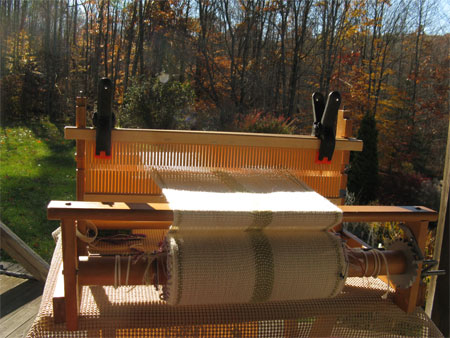
(Full disclosure – there was a little problem. I don’t have a heddle stand to hold two heddles in position, so keeping them where I wanted them to be to make threading reasonable required propping up on water glasses and other paraphernalia. Which slipped with some regularity.)
Had it been too hard for my brain to handle on the evening before a show I had a fall back position of using just one heddle with two threads in every slot and every hole. Glad I didn’t have to use it.
Anyway, I got the third and final scarf woven off on my porch, then wet finished and pressed them. I am less than enthralled with some of my design choices but love the baby alpaca and will definitely use it again.
For the first scarf I wove in some bands of varying width using doubled cashmere-silk as the weft. It’s okay. Strikes me too much as prayer-shawl-lite. Not exactly the effect I was hoping for.
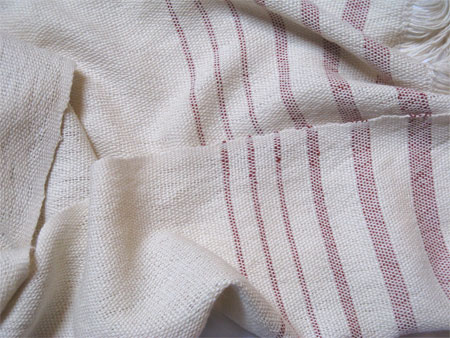
The second scarf is far more colorful. I used a hand painted wool-silk blend Tammy calls Snow White for the weft. I wove several rows of the alpaca, did a 3-bead leno, and several more rows of alpaca at each end. This is definitely my favorite of the three.
For the third I made a dreadful error in judgement. I decided to replace several of the baby alpaca warp threads with a lovely spring green hand dyed superwash merino. Sounded good in theory. In reality – NOT! Each of those threads (14, as I chose) had to be separately weighted to provide the same tension as the baby alpaca. That wouldn’t have been an overwhelming problem if I was home, but I was at a show. I did not have enough stuff of the correct weight to hang on 14 threads. Or even enough ways to hang the weights I did have. So basically I made a mess late in the day and devised a way to improve it by bringing paper clips and metal washers in with me the next morning. Still looked like a mess, but at least it was functional.
To top this mess off, some of the merino was sort of shredding. Had the dye bath been too strong? Had I hung onto it too long? I didn’t know, but it made another layer of problem.
Third problem – when I cut those 14 replacement warp threads I obviously wasn’t thinking clearly ‘cuz I didn’t make them long enough to weave the planned 76″.
By the time I got to the 60″ I could weave with the merino I’d put in for the warp, I was done. No way was I going to piece in more warp threads for this scarf. So it’s both shorter and less attractive than I’d like. I’ll put a lower-than-usual price tag on it and see if it sells.
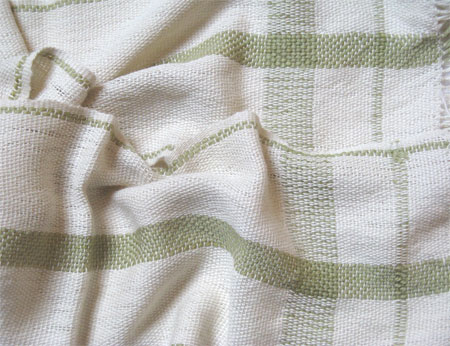
Gotta head back to the loom. I have 4 special orders to weave plus more things I’d like to have on hand for the next show. Plus more bags to make.

